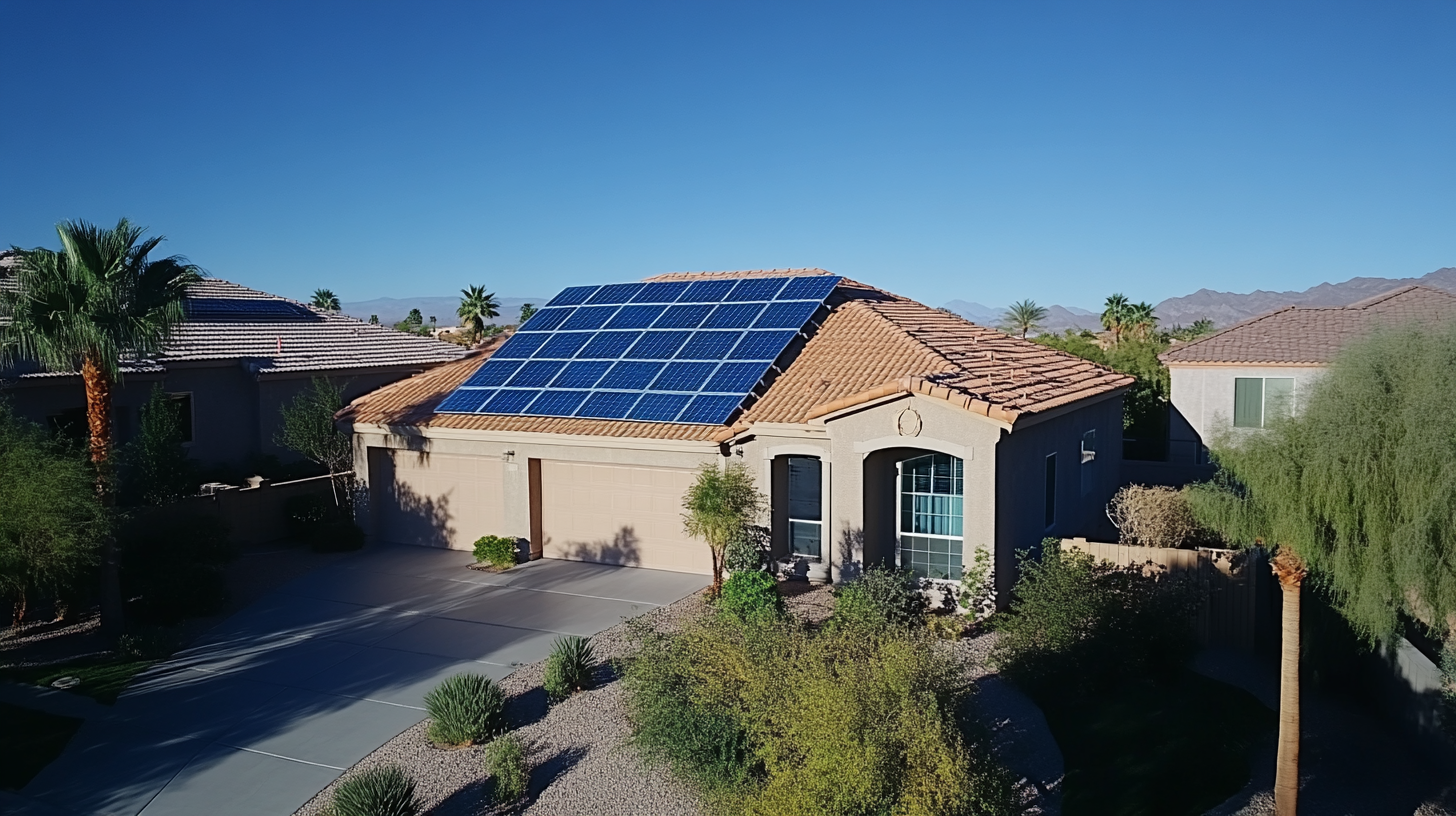Your Ultimate Guide to Transitioning Smoothly to Solar Power: A Step-by-Step Tutorial
As the global energy landscape shifts towards sustainability, "Switching To Solar Power" has emerged as a pivotal trend for both environmental and economic reasons. According to the International Renewable Energy Agency (IRENA), the solar power capacity has doubled over the past five years, reaching a staggering 1,000 gigawatts in 2020 alone. This rapid growth underscores the increasing recognition of solar energy as a viable and cost-effective alternative to fossil fuels. Not only does solar power significantly reduce greenhouse gas emissions—by approximately 80% compared to traditional energy sources—but it also offers substantial savings on energy bills, with homeowners experiencing an average reduction of 50% in electricity costs.

Therefore, transitioning to solar power represents a crucial step for individuals and businesses alike, leading to a more sustainable future while capitalizing on financial benefits. This guide will take you through the essential steps needed for a smooth transition to renewable energy.
Understanding the Basics of Solar Power and Its Benefits for Homeowners
Solar power has rapidly become a popular choice for homeowners looking to minimize their energy bills and reduce their carbon footprint. Understanding the basics of solar energy is essential for anyone considering this clean energy alternative. At its core, solar power harnesses sunlight using photovoltaic cells to generate electricity, which can be utilized to power your home or even stored for later use. This renewable energy source not only helps preserve the environment by reducing reliance on fossil fuels but also offers the potential for significant long-term savings.
One of the primary benefits of solar power for homeowners is the potential to lower energy costs. By generating your own electricity, you can significantly reduce or even eliminate your monthly utility bills, depending on the size of your solar system and your energy consumption. Additionally, many regions offer
incentives and tax credits to make the switch even more financially attractive. Moreover, using solar energy can increase your property's value, making it a solid investment. Embracing solar power ultimately aligns with a sustainable lifestyle, allowing you to contribute to a greener future while enjoying the economic advantages it brings.
Choosing the Right Solar System: Types, Sizes, and Technology Options
When transitioning to solar power, selecting the right solar system is paramount to maximizing efficiency and savings. There are several types of solar systems to consider, including grid-tied, off-grid, and hybrid systems. According to a report by the National Renewable Energy Laboratory (NREL), grid-tied systems are not only the most commonly installed type but also the most cost-effective, offering homeowners the benefit of selling excess energy back to the grid. This setup is ideal for those looking to reduce their electricity bills while keeping their connection to the utility network.
In terms of size, the typical residential solar system ranges from 3 to 10 kilowatts (kW). The size you choose should correlate with your energy usage. The U.S. Energy Information Administration (EIA) reports that the average American home consumes about 877 kWh per month, indicating that a 5-7 kW system would generally suffice for most households. Furthermore, technology options such as monocrystalline and polycrystalline solar panels also play a crucial role in performance. Monocrystalline panels, while usually more expensive, offer higher efficiency rates, averaging around 20% compared to polycrystalline panels, which typically range between 15-17%. By carefully assessing these factors, homeowners can make informed decisions tailored to their energy needs and budget.
Your Ultimate Guide to Transitioning Smoothly to Solar Power
| Solar System Type | Ideal Size (kW) | Technology Options | Estimated Cost ($) | Typical Lifespan (Years) |
|---|---|---|---|---|
| Grid-Tied | 3-10 | Monocrystalline, Polycrystalline | 5000 - 15000 | 25 |
| Off-Grid | 1-5 | Thin Film, Bifacial | 3000 - 10000 | 20 |
| Hybrid | 5-15 | Monocrystalline, Lithium-Ion Storage | 8000 - 20000 | 25 |
| Community Solar | Varies | Monocrystalline, Polycrystalline, Inverters | Varies | 25 |
The Step-by-Step Process to Evaluate Your Energy Needs and Costs
Transitioning to solar power can seem daunting, but with a systematic approach to evaluating your energy needs and costs, the process becomes manageable. Begin by conducting a comprehensive energy audit of your home. This entails reviewing your electricity bills to identify patterns in usage, determining which appliances consume the most energy, and understanding your peak consumption hours. Armed with this data, you can ascertain the size of the solar system required to meet your energy demands effectively.

Next, estimate the costs associated with implementing solar power in your home. Research the various solar panel options and their associated installation fees. Don’t forget to factor in potential tax incentives and rebates that can significantly reduce the upfront investment. It’s also essential to explore financing options, such as solar loans or leases, that can help spread out the cost over time. By mapping out your energy needs alongside the financial implications, you will not only make an informed decision but also ensure that your transition to solar power is both seamless and economically viable.
Navigating Incentives and Financing Options for Solar Energy Solutions
Transitioning to solar energy offers numerous benefits, but navigating incentives and financing options can be daunting. According to the Solar Energy Industries Association (SEIA), more than 3 million homes in the U.S. have installed solar panels, and many of these installations have been made possible through generous federal and state incentives. The federal solar tax credit, currently at 26%, allows homeowners to deduct a significant portion of the installation costs from their federal taxes. Additionally, many states offer additional rebates or performance-based incentives to make solar power even more accessible.
Financing options further enhance the feasibility of switching to solar. Homeowners can explore solar loans, leases, and power purchase agreements (PPAs), each providing distinct advantages. A recent report by the National Renewable Energy Laboratory (NREL) highlights that solar loans can cover up to 100% of installation costs, enabling individuals to pay off their systems over time while benefiting from immediate savings on their utility bills. Furthermore, as the cost of solar technology continues to decline—down nearly 90% since 2010—financing solutions become increasingly attractive, allowing more households to invest in renewable energy and contribute to a sustainable future.
Your Ultimate Guide to Transitioning Smoothly to Solar Power
This chart illustrates the average costs associated with transitioning to solar power over the past five years, showing the decline in installation costs and the rise in available incentives.
Installation and Maintenance: What to Expect and How to Prepare
When considering the switch to solar power, understanding the installation and maintenance process is crucial for a seamless transition. First, you’ll need to prepare your home for the installation. This includes assessing your roof’s condition, ensuring it receives ample sunlight through the day, and determining the appropriate size of the solar system for your energy needs. Consulting with a professional solar installer can help you understand the various types of panels and configurations available, as well as any local regulations or permits required for the installation.
Once your solar system is operational, regular maintenance is essential to ensure its efficiency. Most solar panels require minimal maintenance, but it’s good practice to inspect them periodically for dirt, debris, or damage. Cleaning the panels a couple of times a year, or as needed, can significantly improve their performance. Additionally, monitoring the system’s output will help you identify any potential issues early on. Staying informed about the warranty and service agreements can also make a difference in how you manage any repairs or upgrades in the future, ensuring your investment in solar power remains beneficial for years to come.
